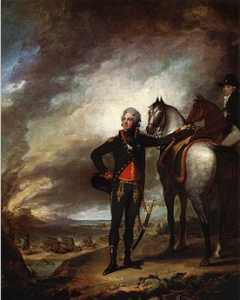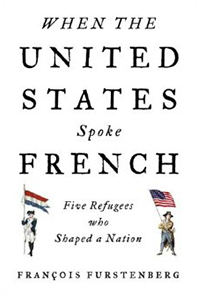By François Furstenberg (Guest Contributor)
Louis-Marie, Viscomte de Noailles, descended from one of France’s noblest families. His ancestors had served France’s kings for centuries. His great-great-grandfather was Henri II’s ambassador to England in the middle of the sixteenth century. His great-grandfather was a general under Louis XIV, the Sun King. His mother was Marie-Antoinette’s first lady of honor.
When the American Revolution broke out, Noailles was eager to prove himself. In October 1781, at the battle of Yorktown, he repelled a desperate British sortie, leading a company of his Soissonois Brigade with the shout “Vive le roi!” When the British called for a truce, it was Noailles who represented the French government in the negotiations for Lord Cornwallis’s surrender.
After the war Noailles returned to France, where he threw himself into politics and liberal reform. When the French Revolution erupted in 1789, Noailles served in the Assemblée constituante, which drafted the first constitution in French history. He became a leading liberal voice. It was he who presided over the assembly on August 4, 1789, when feudal privileges were abolished.
But as the French Revolution grew more radical, Noailles fled France to the United States. He lived in Philadelphia for several years, cavorting with the great and good in the American capital. He became a merchant and rebuilt a fortune. These were momentous years in French and American history, and his was a momentous life.
But for sheer drama, nothing matched his final days.
A Momentous Life and a Dramatic End
When Napoleon determined to re-establish a French empire in North America in 1802, Noailles sailed to the Caribbean to join the mission. He was stationed in Saint Domingue, today’s Haiti, where since 1793 the island’s hundreds of thousands of slaves had liberated themselves; there he conducted a quasi-independent foreign policy under the leadership of the brilliant Toussaint Louverture.
Noailles was one of the last French officers to abandon the island in the waning days of the horrific French mission, just days before Haiti declared its independence. Late one December evening of 1803, he evacuated his garrison and the French inhabitants they’d been protecting. Sailing at night, he eluded the British ships patrolling the Caribbean waters and landed on the coast of Cuba.
But Noailles had not finished fighting. Dropping off the French inhabitants and most of his soldiers, he outfitted a privateerand sailed it back out. As the evening set on December 31, 1803, Noailles encountered the Hazard, a British privateer. He raised a British flag and approached, addressing the captain—after nearly a decade in the United States, Noailles’ English was excellent.
He learned that the Hazard was patrolling the waterways between Cuba and Haiti on the lookout for a general named Noailles who had recently managed to elude the British navy. What a coincidence! Noailles exclaimed. He was on the same mission. Why not join forces?
Later, under the cover of night, he sprang his audacious trap. Ramming the Hazard from the side, he stormed the deck at the head of thirty grenadiers and surprised its crew. After a fierce battle they captured their prize, and Noailles, although wounded, sailed into Havana victorious. The scene was commemorated in a grand historic portrait by Théodore Gudin, the French painter, commissioned by Noailles’ son, now in the possession of one of his descendants. (How I acquired an image of portrait is another story.)
Noailles died a few days later from his wounds. His soldiers enclosed his heart in a silver box, draped with regimental colors, and sent it back to France, where it was buried.
François Furstenberg, a professor of history at Johns Hopkins University, is the author of When the United States Spoke French: Five Refugees who Shaped a Nation, which follows the adventures of several aristocratic émigrés who lived in the United States in the 1790s.
Like what you’re reading? Subscribe to our newsletter below!
Image: Louis-Marie, Vicomte de Noailles, painted byGilbert Stuart, 1798. Metropolitan Museum of Art.


